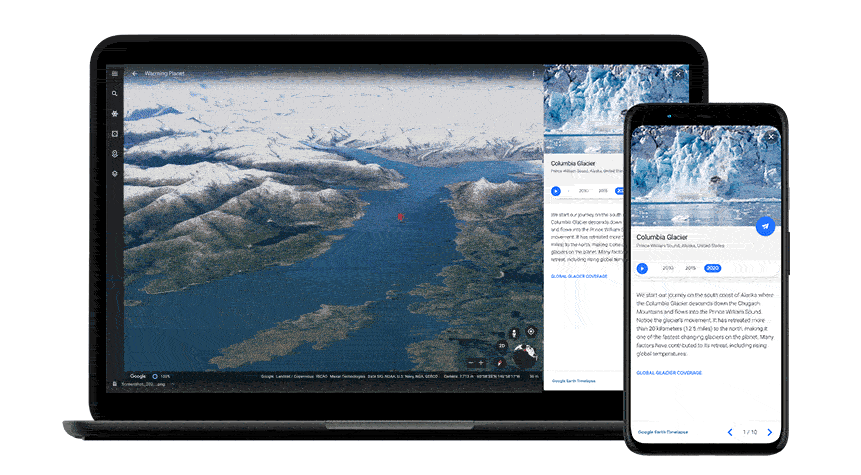
Google has worked with the team over Carnegie Mellon University’s Create Lab to bring timelapse videos to Google Earth, which the tech giant says is the biggest update the company has made to the platform since 2017.
According to Rebecca Moore, Earth Engine and Outreach director of Google Earth, Timelapse has been developed using 24 million satellite images from the past 37 years — from 1984 to 2020 — before being compiled into an interactive 4D experience.
“Making a planet-sized timelapse video required a significant amount of what we call ‘pixel crunching’ in Earth Engine, Google’s cloud platform for geospatial analysis … it took more than 2 million processing hours across thousands of machines in Google Cloud to compile 20 petabytes of satellite imagery into a single 4.4 terapixel-sized video mosaic — that’s the equivalent of 530,000 videos in 4K resolution,” she explained in a blog post.
She explained introducing Timelapse is “about zooming out to assess the health and well-being of our only home, and is a tool that can educate and inspire action”.
To play its part in helping the environment, Google made a commitment last September to operate with carbon-free energy across its businesses worldwide by 2030.
Through Timelapse, users can choose any place on the planet they want to watch time unfold over four decades. They can search for the location via the search bar. Timelapse videos include watching the expansion of Dubai, the difference the Surui people have made through their protection of the Amazon rainforest, the change of the glaciers in Greenland, among others. Alternatively, users can watch more than 800 Timelapse videos in 2D or 3D on Google Earth or YouTube.
Online guided tours using Google’s storytelling platform Voyager can also be accessed. The tours have been divided based on five themes: Forest change, urban growth, warming temperatures, sources of energy, and fragile beauty.
Google Earth will be updated annually with new Timelapse imagery, Moore added.
In more Google news, the company has introduced COVID-19 vaccination locations on Google Maps and Search in the United States, Canada, France, Chile, India, and Singapore.
Additionally, Google announced it will provide funding to vaccine alliance Gavi for 250,000 COVID-19 vaccinations to help countries in need, as well as commit AU$2.5 million in grant funding to Partners in Health, Stop the Spread, and Team Rubicon, which can be used towards efforts like pop-vaccination sites in the Black, Latino, and rural communities in the United States.
An additional AU$250 million in Ad Grants will also be provided by Google to governments, community, and public health organisations, including the Wealth Health Organization, to ensure people receive accurate vaccine information.
APPLE STANDS UP $200M FUND TO COMBAT CLIMATE CHANGE
Apple has partnered with Conservation International and Goldman Sachs to establish a $200 million initiative — called the Restore Fund — to remove carbon dioxide in the atmosphere.
Under the initiative, the companies aim to remove at least 1 million metric tons of carbon dioxide annually from the atmosphere, equivalent to the amount of fuel used by over 200,000 passenger vehicles, while also develop a viable financial model to invest in forest restoration programs.
“Through creating a fund that generates both a financial return as well as real, and measurable carbon impacts, we aim to drive broader change in the future — encouraging investment in carbon removal around the globe. Our hope is that others share our goals and contribute their resources to support and protect critical ecosystems,” Apple environment, police, and social initiatives vice president Lisa Jackson said.
Conservation International, a co-investor in the fund, will be responsible for ensuring projects that the fund supports meet “strict environmental and social standards”. Goldman Sachs is managing the fund.
This effort is part of Apple’s goal to become carbon neutral across its supply chain by 2030.





































